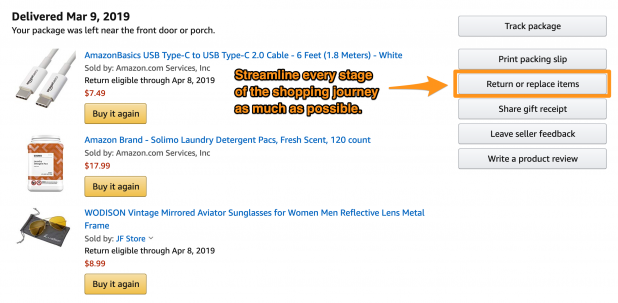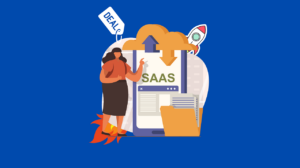You have a unique product to offer consumers and a stunning website that makes buying easy, but you’re not seeing the growth that you want from the one-off sales from indifferent customers. The company logo that you designed yourself is prominently displayed on your landing page, and your shopping cart software is one of the fastest available. What’s the problem? You’re not in a long-term relationship with your customers. Using online and offline touchpoints in context help to extend the customer lifecycle of your target audience.
Make Shared Beliefs and Values the Backdrop of Customer Engagement
While customer engagement remains a big part of marketing to consumers in the online retail space, today’s customers ultimately choose to buy from companies that they like. Common values heavily influence purchasing decisions, and they often trump frequent engagement according to one Entrepreneur article. For instance, a company that supports the U.S. Constitution’s 2nd Amendment right to bear arms will not likely gain ongoing sales from people who want to stop violence by banning gun sales.

The internet makes companies more transparent, and consumers do a great job of rewarding companies that support their belief systems. Alternatively, the same consumers consistently punish businesses that don’t share their values. Today’s political environment polarizes all aspects of society, and the world of e-commerce is no different. Successful customer relationship managers keep the customer in mind at every touchpoint and will give more weight to shared belief systems in the future.
After laying the foundation for modern customer relationship management, you’ll want to integrate these online and offline touchpoints to lengthen the customer lifecycle. To help you better organize your touchpoint marketing strategy, it helps to think about touchpoints in terms of pre-purchase, purchase, and after-purchase activities.
Pre-Purchase Multi-Channel Touchpoints
1. Community Involvement
There aren’t many entrepreneurs who’ll brave the marketplace without a compelling mission for their new companies. They realize that they must facilitate an emotional tie between their new brand and their target audience early to gain a foothold in a competitive market. Community involvement is one of the best ways to introduce your company to socially aware consumers who tend to show their loyalty through their buying decisions.
Participating in a charity 5K run for cancer research, a Habitat for Humanity building project for low-income families, and a clean-up session for an important waterway are some examples of offline touchpoints that resonate with certain consumers.
2. Public Relations
You and your staff do community activities because they align with your company’s core values. While broadcasting good deeds is a little tacky for individuals, it’s almost expected of companies. Your customers want to know if you financially supported the pro-life rally last weekend or if you plan to sponsor a job fair for homeless military veterans.
Public relations activities in the form of press releases and partnership advertisements help to spread the word about your company’s views to your customers and prospects. People who feel strongly about the issues that your company supports will remember your brand for better or for worse.
3. Social Media
You’ll find that most of your target audience uses some form of social media every day. They rely on it for news updates and commentary from trusted sources. They also get product and service reviews about new offerings from influencers and peers who frequent social media channels.
Almost 75 percent of U.S. adults use the video-sharing platform YouTube according to a 2018 Pew Research Center publication. Introducing your company’s brand, its offerings, and its mission via a YouTube video is a great way to reach out to prospects and reinforce good experiences with existing customers.
Purchase Multi-Channel Touchpoints
1. Your Branded Website
Your company’s website is an important marketing tool when it comes to closing sales. Here are some items that it should include.
- Compelling backstory
- Clear description of how your brand solves customer pain points
- Direct calls to action
- Robust shopping cart software for e-commerce

An outstanding website has embedded remarketing code that allows you to follow up with website visitors who showed interest in your offerings but didn’t buy anything during the visit. Remarketing activities put your brand in front of website visitors while they surf the internet for other products, services, or pieces of information later.
And don’t forget to optimize your site — consider all of the devices people will use to access your content. Your page speed needs to be up to par and your images need to load quickly if you expect anyone to stay on your site long enough to actually buy your products. Choose premium WordPress hosting, optimize your images, and ensure that everything on your site is responsive.
2. Store
Don’t underestimate the power of in-person contact with customers and prospects. When consumers visit your store, they get a glimpse of your company’s culture via the store’s layout and interactions with your salespeople. A consistent marketing message is the key to using your store as a successful touchpoint during a sale.
Display your company’s backstory in the store using the same colors, logo, and design themes that appear on your website. Have salespeople mention the fun that they had participating in the company-sponsored, charity 5K race last weekend.
Building a rapport with prospects based on shared values is often just as important as helping clients to find the perfect outfit for a special event. If your store offers convenient site-to-store shipping, get your staff members to remind customers about it. This is a way to integrate your website activities with your brick-and-mortar store functions.
Furthermore, do not forget to make it easy for people to find you. Display your physical address on your online store and your web address in your physical store. Most modern shoppers enjoy purchasing both on and offline — make sure their shopping experience is streamlined.
3. Promotions
Promotions that are based on the shared values of customers and your organization offer fantastic ways to strengthen customer relationships and lengthen the customer lifecycle. For instance, your company can offer customers free shipping on their next online order when they meet your CEO at the upcoming beach cleanup event in your community.
Post-Purchase Multi-Channel Touchpoints
1. Customer Support System
Sometimes products and services don’t meet customer expectations, and customer support systems handle all types of gripes that include user errors, order glitches, and damaged product claims. While your customers are likely to be upset when they call customer support, these interactions are opportunities to make your brand shine.
With superior customer care representatives, your brand can become the marketplace hero. You’ll notice examples of this with Amazon’s efficient delivery systems and hassle-free returns as well as with Publix’s Price Promise Guarantee. If the register rings a different price from the one that’s advertised in the store, then you get the item for free at Publix.
2. Marketing Emails
After a customer makes an online or in-store purchase, it’s smart for you to follow up with a thank-you email to keep the budding relationship between your company and the customer going. Sending a follow-up marketing email is also a great excuse to do upselling or cross-selling activities.
Conclusion
Today’s consumers take financial, environmental, and corporate stewardship seriously. The availability of information in the digital age makes them more informed than consumers of 25 years ago. The future of online retail will include a consistent brand message that’s woven into connected online and offline touchpoints throughout the customer lifecycle. Contact us today to create the perfect touchpoint marketing strategy for your business.






